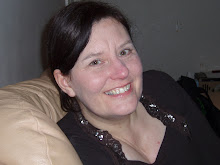
Jacqueline Wilson's latest hardback children's book has been age-banded by her publisher despite the author signing the "No to Age Banding" pledge. The hardback of Cookie, which is published this week (2nd October) by Doubleday, an imprint of Random House Children's Books, includes the age band 9+, as does the back of the special edition tin that contains the book.
The development first came to light when a bookseller left a comment on theBookseller.com. It read: "We received stock of Jacqueline Wilson's new book Cookie at work today.
The development first came to light when a bookseller left a comment on theBookseller.com. It read: "We received stock of Jacqueline Wilson's new book Cookie at work today.
She's signed the statement at www.notoagebanding.org and yet the back of the tin that the book is inside (and therefore I'm guessing the back of the book itself) has an age banding stamp on it of 9+. I've seen stamps on quite a few other books recently (including the new Puffin Classics edition of What Katie Did) but this is the first time I've seen one on a book by one of the signed up authors."
In a statement Random House said Wilson had agreed to the banding on the back of the hardback after "close discussion" with the author. The statement read: "Jacqueline can see the arguments both for and against printed age guidance on books but does retain some reservations about the subject. She has agreed for age guidance to be put on the cover of Cookie but RHCB will maintain the discussion with her and her agent over the matter and will review the situation on a book by book basis."
In a statement Random House said Wilson had agreed to the banding on the back of the hardback after "close discussion" with the author. The statement read: "Jacqueline can see the arguments both for and against printed age guidance on books but does retain some reservations about the subject. She has agreed for age guidance to be put on the cover of Cookie but RHCB will maintain the discussion with her and her agent over the matter and will review the situation on a book by book basis."
Wilson told The Guardian that her future titles would not be age-banded, but that as this one had been produced "ages ago" with special "cookie tin" packaging she had decided against making a fuss over the inclusion of the 9+ graphic.
(TheBookseller.com 3rd October 08)

















